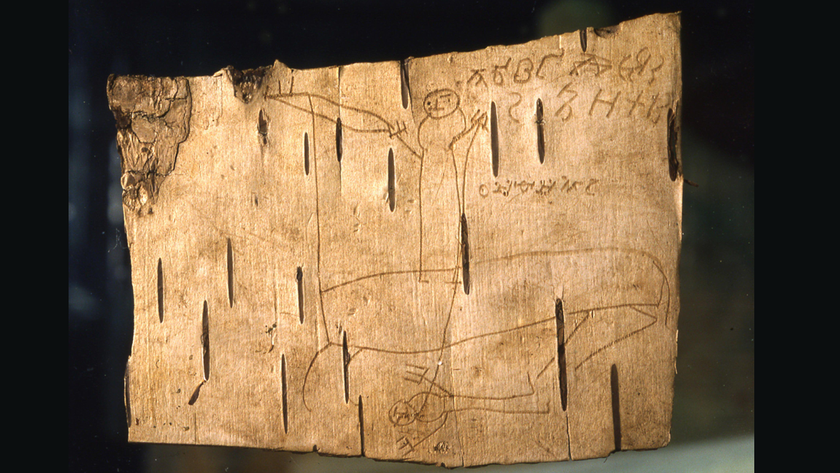Photos: Seafaring Relics Discovered in Hong Kong's Waters
Hong Kong's waters

Underwater archaeologists have made two successful diving expeditions in recent weeks to recover artifacts off the coast of an island near Hong Kong.
The finds include this European-pattern cannon that researchers think may have been carried on a merchant ship as a defence against pirates, which were a frequent scourge of trading vessels in the waters around Hong Kong until the mid-1800s.
In this image, Paul Harrison, a conservator at the Hong Kong Maritime Museum, removes centuries of seabed sediments from the cannon. [Read full story about Hong Kong's maritime artifacts]
Recovery efforts
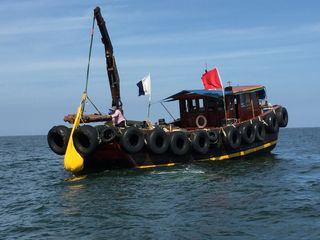
The cannon was recovered in July by archaeologists and divers from the Hong Kong Underwater Heritage Group, from a site in shallow waters off the coast of Basalt Island – one of more than 200 islands within the Hong Kong Special Administrative Region.
A team of seven divers from the group made a total of 25 dives to free the 1-ton gun, where it had accreted to rocks on the seabed, and raise it to the surface with an air-filled "lift bag." This image shows the recovery boat lifting the cannon, with the yellow lift bag still attached.
Protection against pirates?
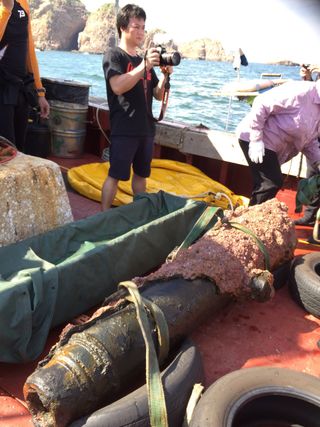
The cannon is a European-pattern "cannonade" or "gunnade," shorter and lighter than a naval-standard 24-pound long gun, which researchers think dates from the early 1800s.
Expedition leader and archaeologist Bill Jeffery says these sort of cannons were commonly fitted on European merchant vessels to give them some protection against pirates.
The crust of coral and other built-up sediments that cemented the gun to the seabed can be seen in this image.
Canon markings
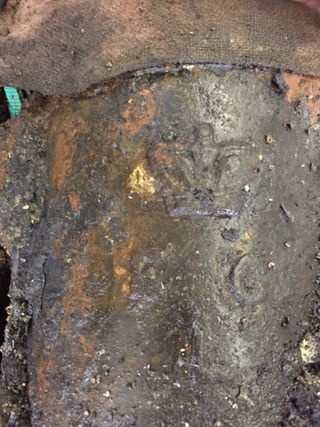
The researchers think these foundry marks on the cannon — a British crown and the letters "E," "C," and "L" — signify that it was made in a small foundry in Britain or elsewhere in the British Empire.
Guns from the early 1800s bearing similar foundry marks have been found in India, Japan and New Zealand. Because most naval guns were made at well-recognized foundries, the researchers don’t think this gun came from a naval ship.
Underwater artifact
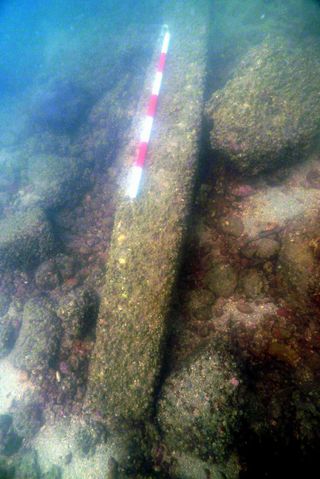
The same archaeological dive team also recovered this granite anchor stock from a dive site near High Island in July. Estimated to be around 1,000 years old, it is the oldest maritime artifact found in Hong Kong waters.
The researchers think the anchor stock comes from a merchant vessel that anchored above the site during China’s Song Dynasty, which lasted from 960 A.D. to 1279 A.D.
Anchors aweigh
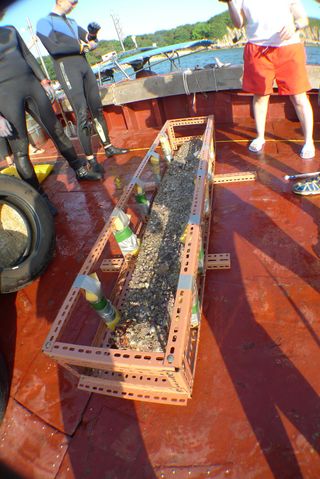
The granite stock would have formed the crosspiece of an anchor made mainly from wood, with wooden flukes to dig into the sea bed.
Soon after the Song Dynasty, changes in technology made large iron anchors more practical, and the Song-style anchors went out of use.
The archaeological dive group and the Hong Kong Maritime Museum, who are working together on the latest recovery efforts, hope the anchor stock and the cannon will be able to go on display in the museum after conservation work is completed in one or two years.
Sign up for the Live Science daily newsletter now
Get the world’s most fascinating discoveries delivered straight to your inbox.
Tom Metcalfe is a freelance journalist and regular Live Science contributor who is based in London in the United Kingdom. Tom writes mainly about science, space, archaeology, the Earth and the oceans. He has also written for the BBC, NBC News, National Geographic, Scientific American, Air & Space, and many others.

